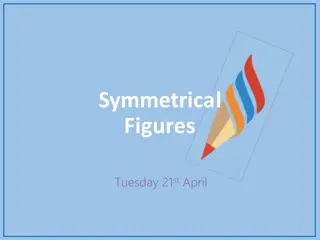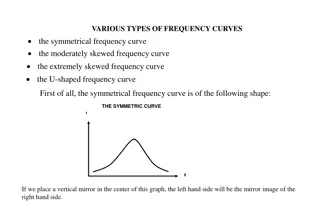Parabolic Symmetrical Curve Types and Signals
A collection showcasing various types of parabolic symmetrical curves, including their unique characteristics and signal interpretations. Explore the different configurations and patterns depicted in the images to develop a deeper understanding of these mathematical curves.
Download Presentation

Please find below an Image/Link to download the presentation.
The content on the website is provided AS IS for your information and personal use only. It may not be sold, licensed, or shared on other websites without obtaining consent from the author.If you encounter any issues during the download, it is possible that the publisher has removed the file from their server.
You are allowed to download the files provided on this website for personal or commercial use, subject to the condition that they are used lawfully. All files are the property of their respective owners.
The content on the website is provided AS IS for your information and personal use only. It may not be sold, licensed, or shared on other websites without obtaining consent from the author.
E N D
Presentation Transcript
Parabolic symmetrical curve: Types:
Parabolic symmetrical curve: Types:
Parabolic symmetrical curve: Types: g1 > g2
Parabolic symmetrical curve: Types: g1 > g2
Parabolic symmetrical curve: Types: g1 > g2
Parabolic symmetrical curve: Types: g1 > g2 g1 < g2
Parabolic symmetrical curve: Types: g1 > g2 g1 < g2 A = g2 g1 = (-)
Parabolic symmetrical curve: Types: g1 > g2 g1 < g2 A = g2 g1 = (-) The signal of A and r = (-)
Parabolic symmetrical curve: Types: g1 > g2 g1 < g2 A = g2 g1 = (-) The signal of A and r = (-)
Parabolic symmetrical curve: Types: g1 > g2 g1 < g2 A = g2 g1 = (-) The signal of A and r = (-)
Parabolic symmetrical curve: Types: g1 > g2 g1 > g2 g1 < g2 A = g2 g1 = (-) The signal of A and r = (-)
Parabolic symmetrical curve: Types: g1 > g2 g1 > g2 g1 < g2 A = g2 g1 = (-) The signal of A and r = (-)
Parabolic symmetrical curve: Types: g1 > g2 g1 > g2 g1 < g2 g1 < g2 A = g2 g1 = (-) The signal of A and r = (-)
Parabolic symmetrical curve: Types: g1 > g2 g1 > g2 g1 < g2 g1 < g2 A = g2 g1 = (-) A = g2 g1 = (+) The signal of A and r = (-)
Parabolic symmetrical curve: Types: g1 > g2 g1 > g2 g1 < g2 g1 < g2 A = g2 g1 = (-) A = g2 g1 = (+) The signal of A and r = (+) The signal of A and r = (-)
Distance to highest and lowest points in crest and sag curves
Distance to highest and lowest points in crest and sag curves
1. Distances are measured horizontally and vertically 2. Rate of change in slope with distance is constant = r 3. e = e L= length of vertical curve measured horizontally. St. = station = 100 m 1 St. = 1+00 g1, g2 = percent longitudinal grades or slopes of tangents. +g = upgrade, -g = downgrade A = algebraic difference in grades = g2 g1
r= rate of change in grade per station (or 100m) = A/L P.V.C. (PVC) = point of beginning of vertical curve = Point of vertical curvature P.V.I. (PVI) = point of vertical intersection or vertex = Point of vertical Intersection P.V.T. (PVT) = point of vertical tangency = end of V.C. y= difference in elevation between tangent & curve e = difference in elevation at P.V.I. X = horizontal distance in stations from P.V.C. or P.V.T. to the required point. Y= elevation of point on curve























